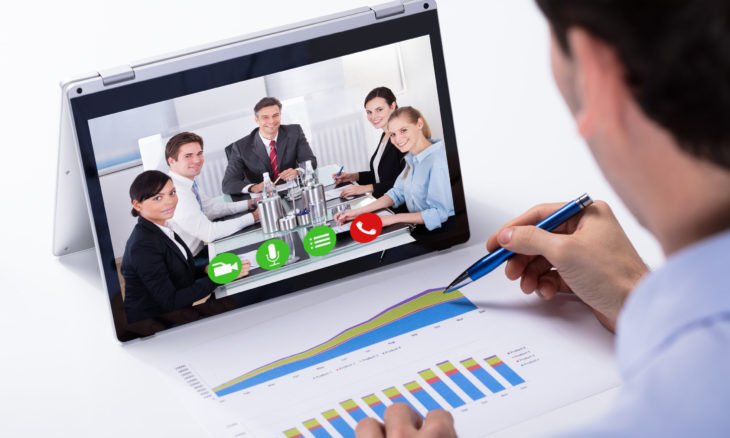Karin Reed and Joseph Allen have written a great sequel to their book, Suddenly Virtual, titled, naturally enough, Suddenly Hybrid: Managing the Modern Meeting. It should be required reading for all of us as we try to keep up with the changing nature of work as we move into the third year of the COVID pandemic.
Suddenly Hybrid acknowledges that the latest development in how we work together is this notion of the hybrid meeting — which involves bringing together participants from both the office and remote locations and being equitable to both. Certainly, the meeting landscape is more consuming: According to cited research, our collective time in meetings doubled from February 2020 to February 2021. A 2021 Forbes survey found that almost everyone wants to work on a hybrid basis, meaning mixing in-office and remote time as part of one’s job.
The authors say, “Hybrid meetings bring a level of complexity to the meeting environment that few have experienced before, but hybrid meetings can work well when done right. The so-called Future of Work is hybrid.” Their book explains why this is the case through a variety of research and is chock full of tips, techniques, and templates that are relevant to both meeting leaders and participants to get the most out of going hybrid. Done properly, hybrid meetings can be more satisfying, more productive, with more active participants and less of what the authors call “surface acting,” where participants fake their emotions, play to their webcams and aren’t really listening to what is being said. The authors wisely say: “To effectively lead a hybrid meeting, you need to understand the perspective and needs of everyone who shows up across all the different communication modalities. Rotating how you join and lead meetings will allow you to have a wide enough view of the meeting experience that will better ensure that you don’t have blind spots . . . like a tendency to not take enough breaks!”
The authors have a few suggestions on how to improve hybrid meetings:
- Right-size the meeting by blocking out only the calendar time needed for the planned agenda.
- Encourage space on everyone’s calendar for focus time (meaning, no meetings allowed) and don’t override these time slots.
- Offer more frequent feedback on the contributions of remote employees during the hybrid meeting, so they feel listened to and included.
- Try to prevent multitasking during the meetings: that usually doesn’t work.
- Remove any disconnected tech from meeting rooms that may marginalize the remote attendees.
- Participants should be encouraged to speak up on their own, without being prompted.
- Build in “recovery time” after a meeting ends. The authors cite research showing after a terrible meeting, employees need about 17 minutes to recover and transition. After a wonderful meeting, employees only need about five minutes to recover and transition to their next meeting.
- Meetings shouldn’t be a spectator sport. Instead, they should be a team sport. This means examining all meeting workflows, processes, and technology through the perspective of the remote worker.
There are lots of new terms and new meeting metrics that are thought-provoking, including having “nacho time” with your fellow employees (making time to connect with someone f2f), attempting “calendar transparency” (where schedules for everyone in the company is available, accurate and can make people be more intentional before shooting off a calendar invite), observing “pre-mute etiquette” (that applies for both physical and virtual participants equally), aiming for “collaboration equity” (where all attendees are on equal footing in how they contribute and interact with each other), avoiding “monologuing” (you can probably guess what this is) and then experiencing “digital exhaustion” (having too many back-to-back virtual meetings, often called Zoom fatigue). The authors have several checklists to prevent the latter condition, including hiding your self-view, looking at your webcam’s lens while speaking and when it makes sense to turn off your camera during the meeting.
One of the best ways to ensure any meeting’s success is by having a pre-set agenda. We have all suffered through meetings that didn’t have any agenda. The authors have this checklist of pre-meeting strategies for leaders:
- The extra emphasis placed on pre-work in advance of a meeting, so folks can focus on actual discussion and collaboration
- Strategies to get people talking or at least chatting, such as ice-breakers or using cold-calling (and allowing people to pass) on attendees, and play-by-plays
- The importance of early acknowledgment of remote attendees and how to visually portray them so they are at parity with the in-person folks
- How to prevent the “meeting after the meeting” – leader should always leave the meeting space last
This book will help you build upon the habits from our fully remote world over the past few years and use the collaboration tools found in videoconferencing platforms, even when we are conducting meetings in person or with hybrid audiences. It will help you figure out where an organization wants to land on the “hybrid meeting spectrum,” and remove any obstacles from fully realizing their benefits. If you aren’t yet sure of whether you will benefit from this book, check out some of the checklists I mention above on the book’s website here (use password: Hybrid123).







Recently, reading has piqued my interest to such an extent that it has been difficult for me to maintain a healthy balance between it and my studies. Fortunately, trustmypaper provides assistance to students like me. I like the fact that this industry employs expert writers who charge a reasonable amount for their services.
great post
Hello. I agree with you that currently the most convenient way to find a quality and cheap review writing service is to go to https://pro-papers.com/bluebook-citation-formatting-style-guides . The convenience of such a service lies in the speed and timeliness of solving the most difficult moments in training. I believe that these services are in great demand today among many students in various fields of science.